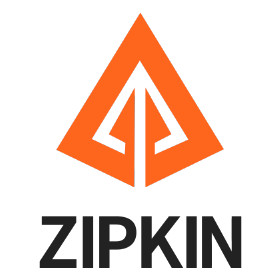Resources
9 min read
Last updated:
To monitor and troubleshoot the performance of microservice-based applications, Jaeger and Zipkin are examples of the most commonly used open-source distributed tracing systems. They both supply users with insight into the flow of requests through various components of a system, which can be utilized to find latency bottlenecks, errors, and performance problems in the system.
It is in this context that we will take a closer look at the differences between the two monitoring systems in order to aid you in determining which is the most appropriate solution for your monitoring requirements.
Contents
| Feature | Zipkin | Jaeger |
|---|---|---|
| Origin | Developed by Twitter, Zipkin is an open-source distributed tracing system designed for monitoring and troubleshooting microservices architectures. | Developed by Uber, Jaeger is an open-source distributed tracing system tailored for large-scale microservices environments. |
| Open Source | Yes | Yes |
| Language Support | Zipkin supports multiple programming languages, including Java, Python, Ruby, Go, and more. | Jaeger offers compatibility with various programming languages, such as Java, Python, Go, Node.js, C++, etc., making it suitable for diverse development ecosystems. |
| Storage Backend | The choice of storage backend in Zipkin depends on the specific implementation. Common options include MySQL, Cassandra, Elasticsearch, and others. | Jaeger supports multiple storage backends, including Elasticsearch, Cassandra, Kafka, and more. Users can choose a backend based on their infrastructure and performance requirements. |
| Query Language | Zipkin provides a limited query language for retrieving trace data, suitable for basic analysis and troubleshooting. | Jaeger introduces Jaeger Query Language (JQL), offering more advanced querying capabilities for trace data, enabling users to perform detailed analysis and custom queries. |
| UI | Zipkin comes with a user interface that allows users to visualize and analyze distributed traces, providing insights into the flow of requests across microservices. | Jaeger also provides a user interface for trace visualization, enabling users to explore and analyze trace data to understand the behavior of their distributed systems. |
| Sampling | Both Zipkin and Jaeger support sampling, allowing users to collect and analyze a subset of traces to manage the overhead of trace data collection in high-traffic environments. | Both tools offer sampling mechanisms to control the volume of trace data collected, ensuring efficient resource utilization in production environments. |
| Trace Data Model | Both Zipkin and Jaeger follow a span-based trace data model, where a trace is composed of spans representing individual operations within a distributed system. | The trace data model in both Zipkin and Jaeger is based on spans, providing a consistent representation of the sequence of operations in a distributed system. |
| Instrumentation | Both Zipkin and Jaeger are compatible with the OpenTracing API, allowing developers to instrument their code consistently across different distributed tracing systems. | The compatibility with the OpenTracing API ensures that developers can use a unified instrumentation approach, making it easier to switch between Zipkin and Jaeger or integrate with other tracing systems. |
| Adoption | Zipkin has been widely adopted in the industry and has a mature ecosystem, making it a popular choice for organizations implementing distributed tracing. | Jaeger is gaining popularity, especially in Kubernetes environments, and is increasingly being adopted by organizations for its integration capabilities and growing community support. |
| Documentation | Zipkin has adequate documentation that covers installation, configuration, and basic usage, providing users with the information needed to get started. | Jaeger is well-documented, offering comprehensive guides on installation, configuration, and advanced features, ensuring users have access to detailed information for effective implementation. |
Jaeger

Jaeger is an open-source, end-to-end distributed tracing system that is intended to track and troubleshoot microservice-based applications as well as to supply an end-to-end distributed tracing solution as a whole. Originally developed by Uber, the service joined the Cloud Native Computing Foundation (CNCF) as a part of its evolving service model. It is the main goal of Jaeger to supply deep insights into how requests and transactions are traveling through a distributed system as they move from one component to another.
Essentially, Jaeger is a distributed tracing tool that enables users to monitor and profile applications composed of a wide array of interconnected services in real-time. This enables the user to keep track of a single request or transaction as it travels from one microservice to another, providing you with a holistic picture of how your system operates as a whole.
Zipkin

Zipkin is an open-source distributed tracing system designed for monitoring and troubleshooting the performance of microservices-based applications. Twitter originally developed the system, it supplies a way to monitor and analyze the flow of requests as they move through numerous services within a distributed system.
Zipkin also focuses on distributed tracing and intends to enable users to trace a specific user request or transaction as it travels through different microservices, offering an extensive view of the system's behavior.
1. Data Model:
Jaeger utilizes a data model that's based on the OpenTracing standard. It presents traces as a tree of spans with a parent-child relationship. Each span includes valuable information regarding an operation, including start time, end time, and tags.
On the other hand, Zipkin's data model is largely similar to Jaeger's, representing traces as a group of spans. Each span contains data like trace ID, span ID, parent span ID, annotations, and binary annotations.
2. Instrumentation:
Jaeger has comprehensive instrumentation libraries for common and popular languages like Java, Go, Node.js, Python, C++, and more. These libraries make it fairly straightforward to instrument applications.
While Zipkin provides instrumentation libraries, it could require more manual instrumentation for a few of the languages and frameworks. However, official documentation does supply guidance on how to instrument multiple components.
3. Query and Visualization:
Jaeger supplies a feature-rich web-based UI that enables its users to query, analyze, and visualize trace data. The UI provides a user-friendly experience and supports powerful features such as service dependency graphs.
Zipkin's built-in web UI is more basic and simple when compared to Jaeger's. For advanced query and visualization capabilities, you may need to utilize third-party tools and integrations like Zipkin-Ui or Zipkin-Viz.
4. Language Support:
Jaeger maintains a wider range of languages compared to Zipkin, and it follows the OpenTracing standard, which enables simple integration with multiple libraries and frameworks. As well as this, it supplies an OpenTracing bridge for compatibility. The official languages that Jaeger supports are C++, C#, Go, Java, Python, and Node.js.
Zipkin mainly focuses on Java, but there are community-supported instrumentation libraries for numerous other languages as well. The official languages that Zipkin supports are C#, Go, Java, Ruby, Scala, and Node.js. Both tools have notable exemptions from their supported languages, such as PHP. Yet, Jaeger and Zipkin don’t entirely lack support for these languages, but they’re unofficial clients so proceed with caution.
5. Storage:
Jaeger supports multiple storage backends, including Open Search, Cassandra, and Kafka. This flexibility enables the user to select the backend that best suits their infrastructure.
Zipkin began by using Cassandra for storage, but it has since also added support for Elasticsearch and other backends. Zipkin utilizes a storage format called Span, which is similar in concept to Jaeger's model.
6. Integration and Ecosystem:
Being part of CNCF and the wider Kubernetes ecosystem, Jaeger is growing in popularity, and its adoption is continuing to rise. Also, the tool has vast integrations with other CNCF projects and technologies.
Zipkin has been used at scale within Twitter and is still a widely adopted solution, especially in organizations with a history of utilizing Twitter's technology stack.
7. Scalability:
Jaeger is regarded for its scalability purposes and its ability to handle high-throughput trace data collection. The solution also maintains horizontal scaling of its collector and storage components.
Within Zipkin, scalability can be attained by horizontally scaling the collector component, but advanced scaling options are likely to require additional configuration, time, and effort.
8. Alerting and Analysis:
Jaeger provides built-in support for anomaly detection and alerting via integrations with storage backends like Elasticsearch and Prometheus.
Conversely, for Zipkin, alerting and analysis capabilities regularly require third-party integrations as well as additional setup and configuration.
9. Library Integration
Jaeger’s official client library for Go offers instrumentation for tracing Go applications. It's part of the Jaeger project and is actively maintained. As well as this, Jaeger has official client libraries for numerous languages, These libraries supply instrumentation for tracing in applications written in these languages.
Zipkin's official library for Java is OpenZipkin. It offers instrumentation for tracing in Java applications. It provides components like Brave for tracing and instrumentation, as well as other integrations for multiple frameworks and libraries. Additionally, Zipkin supports instrumentation libraries for numerous other programming languages. These libraries are community-controlled and will have varying levels of maturity.
10. Framework Integration
Jaeger is intended to be compatible with the OpenTracing API. This is a vendor-neutral, open standard for instrumentation. OpenTracing supplies a consistent API for instrumentation via varying tracing systems, including Jaeger. Also, Jaeger includes native instrumentation libraries for specific frameworks.
Zipkin has strong integration with the Spring Boot framework via Spring Cloud Sleuth. Spring Cloud Sleuth supplies automatic instrumentation for tracing in Spring Boot applications. It produces and propagates trace and span information across varying microservices. Zipkin also supplies instrumentation for multiple other frameworks and libraries.
11. Community
Both tools have active communities. Analyzing these communities can be difficult as they both offer different benefits and amounts to what you wish to gain from the community and the tool. Zipkin’s community is larger than that of Jaeger, but this is most likely because Jaeger is a newer tool so hasn’t been around for as long. To summarize, both tools have active communities that enable each other's growth respectively.
12. Limitations
Whilst both of these tools have exemplary benefits, they also both have limitations. For Jaeger the storage backend is Elasticsearch. While this is commonly used, it might not be the best fit for all cases, and users may need to consider other storage solutions. Also, configuring Jaeger with all its components could be viewed as more complex when compared to other tracing solutions. This complexity can increase significantly with larger-scale deployments.
Zipkin depends on storage backends like Apache Cassandra, MySQL, or Elasticsearch. While this offers flexibility, it can introduce complexity in terms of setup and maintenance. Also, Zipkins UI is not the most responsive. The Zipkin UI could not be as responsive or feature-rich as users would prefer. It does not offer as many advanced features when compared to other tracing tools.
13. Licensing:
Jaeger and Zipkin are both released under the Apache 2.0 License, which allows for both commercial and non-commercial use with minimal restrictions.
To conclude, Jaeger and Zipkin are both powerful tools for distributed tracing, and the choice between them depends on a range of differing factors, including your specific use case, language support, ecosystem, and preference for the user interface.
If you have found yourself leaning towards using Jaeger but aim to make the most of observing your metrics then why not try Logit.io today? We supply complete hosting for Jeager as part of our APM solution.
By providing Jaeger hosting as part of our APM solution, we simplify the process of implementing distributed tracing, enabling you to focus on leveraging the insights and metrics to improve your application's performance and reliability.
If you found this article informative then why not read about the best tracing tools or what is distributed tracing?
